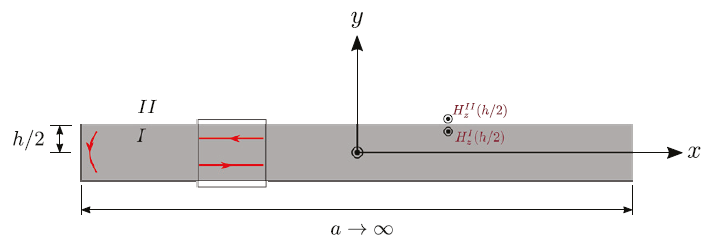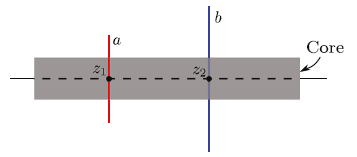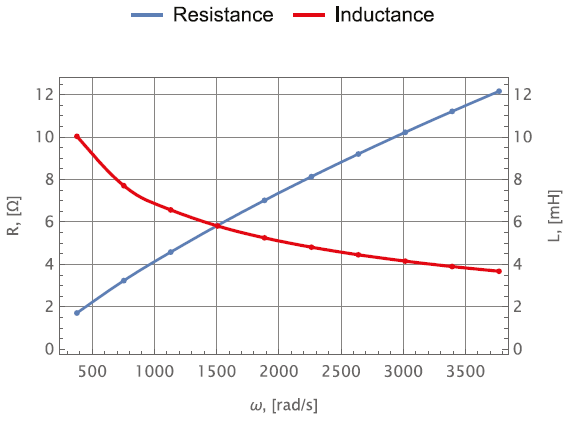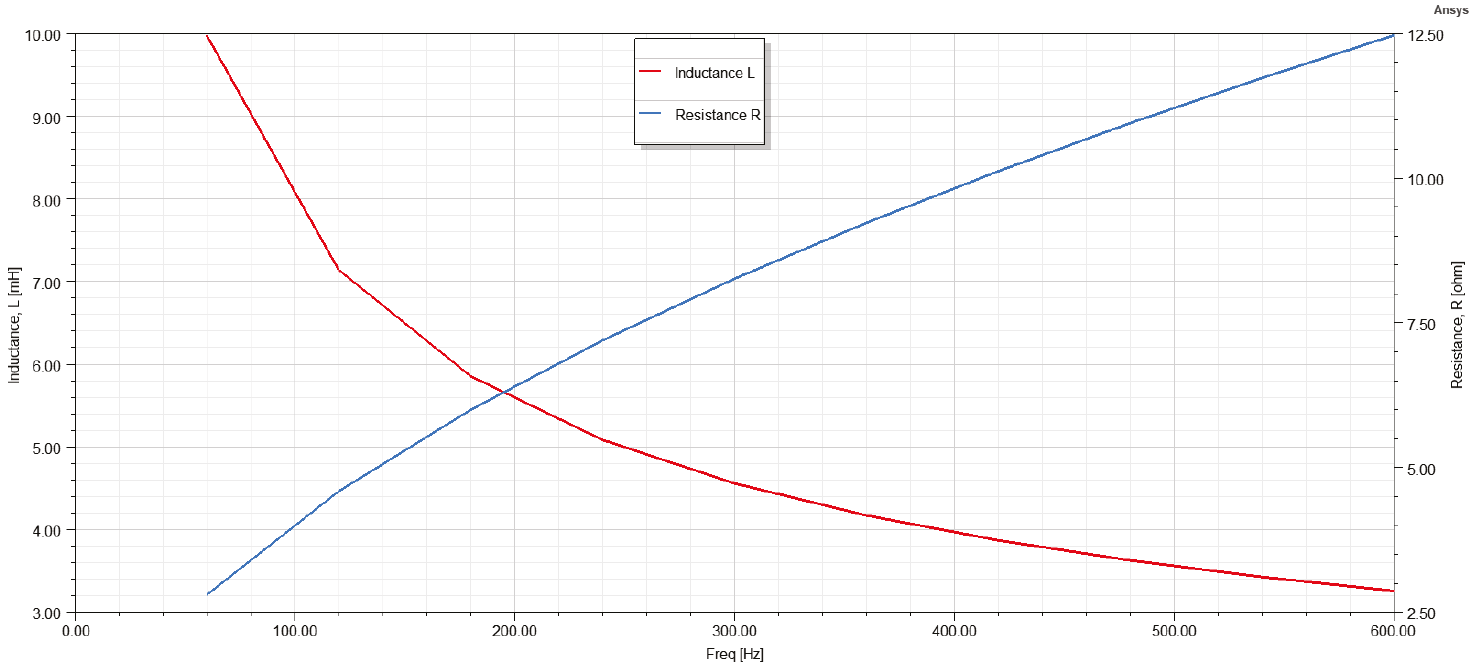Introduction
The appearance of new technologies and materials has allowed the development of smaller electrical devices, without compromising their efficiency (Moradnouri et al., 2020). A novel alternative is the use of high critical temperature superconducting materials (HTS) in the design and construction of electric transformers. The discovery of such materials has allowed the development of smaller transformers with less energy losses and higher efficiency (Tixador, 2004; Hott, 2004; Rey, 2015). Most of the studies carried out in this field are mainly focused on the analysis of the full core transformers (Zueger, 1998; Weber et al., 2005). However, the amount of ferromagnetic materials in such cores make the eddy current and hysteresis losses more prominent. For this reason and considering the appearance of superconducting materials, a new type of transformers has been proposed, such as the so-called partial core transformer (PCT). The main characteristics of these transformers is the presence of only one central core made of ferromagnetic material and absence of ``legs" at the ends of the core. A schematic representation of a PCT is shown in Figure 1. The absence of the supports at the ends of the core in PCT's makes the magnetic flux freely continue in the medium surrounding, as shown in Figure 1. The flux passes through the central core and returns back through the medium where the magnetic reluctance is higher. Therefore, the PCT's reluctance is higher compared to that of full core transformers (Lapthorn et al., 2010). Despite the evident advantages that the use of PCTs implies, very few studies have been carried out to investigate their performance (Bodger et al., 2005; Hu et al., 2016).
In this paper, an analytical model for the determination of the mutual impedance of a partial core transformer is presented taking into account the tensor of the core permeability dependent of frequency. The tensor form of the permeability and its dependence of the frequency is due to the laminated structure of the core. The model developed can be used to determine the feasibility of designing PCTs with the use of superconductor tapes in the windings. The presented research establishes bases for further studies in this field.
Model
The geometry of the model is shown in Figure 2, where a cylindrical laminated core of a radius R is surrounded by a filament of a radius a located at z1 coordinate counted from the center of the core. The core is considered sufficiently long so that the effects at the ends of the core are neglected. The idea of calculating the mutual impedance is similar to that published in Wilcox et al. (1988), except for the fact that the laminated structure of the core results in the anisotropic effective core permeability and conductivity. These tensorial parameters are properly calculated in the next section.
The phenomenon is governed by well-known Maxwell's equations with the following tensorial substantial equations:
Where
Where
Effective permeability and conductivity tensors
The ferromagnetic material that composes each lamination is considered uniform and isotropic, so that the laminated structure of the core is the only cause of the anisotropic property of the core. Then, the orientation of the coordinate system axes shown in Figure 3 yields the diagonal orientation of the tensors
and
To obtain the explicit form of the tensors
As a result, the dependence of the magnetic field H on the coordinates x and z can be neglected.
Maxwell's equations under the mentioned assumptions and for this geometry can be reduced to the following:
where
Figure 4 illustrates boundary conditions for the magnetic field in XOY plane. Red lines represent induced eddy currents.
As seen in the previous expressions, the boundary conditions for the x - y and z - y planes are similar given the dimensions assumed in the analysis. However, in the x - z the field that is conserved to pass between both media is the B field, so that the assumed boundary condition is the following:
Rewriting the above in the form:
The boundary condition for the 𝑦-component shown is obtained.
The solution to equations (4) within the conductive sheet can be obtained in the form:
where
In turn, the tensor of the permeability can be obtained from the constitutive relation
where the average field is obtained according to the following rule. Let
where the volume
The integration of the fields (8) and (7) according to formula (10) and the substitution of the respective results into (11) finally yields:
where
Finally, the sought effective permeability tensor is obtained by substituting the obtained values (12) of the effective permeability into the matrix:
One can observe in (12) that the obtained permeability tensor depends on frequency in a way that in the high frequency limit
Conductivity tensor
The conductivity tensor
Let us consider an alternating electric field in
Therefore, the effective conductivity in
where it is observed that
The same result is obtained in
Permeability and conductivity tensors in the cylindrical coordinate system
Although the axial symmetry of the problem is not hold due to the anisotropic property of the laminated core, the use of the cylindrical coordinates is more adequate to calculate the mutual impedance of the transformer with cylindrical core. Therefore, the effective permeability and conductivity tensors (14) and (17) obtained in the flat coordinates should be transformed into the cylindrical coordinate system. This can be fulfilled using the well-known tensorial transformations when passing from one system of coordinates to another.
From the point of view of the tensorial transformations, the transition from the Cartesian coordinate system to the cylindrical is a 2D rotation given by the following unitary transformation matrix:
Then, the effective permeability and conductivity tensors in the cylindrical coordinates can be obtained as follows:
As a result, we get:
and
These tensors finally can be substituted into Maxwell's equations to calculate self and mutual impedance of partial core transformers with cylindrical laminated core.
Nevertheless, the use of these tensors in the solution of Maxwell's equations in the cylindrical coordinate system may lead to certain mathematical difficulties since the axial symmetry is not hold. Then, some approximate methods, such as consecutive approximations, should be used. Within this method, a sequence of approximate solutions which converges to the exact one, is obtained. This sequence can be truncated at a certain term according to a predetermined criterion, leading to a solution that satisfies a required accuracy. The first approximation can be reached by approximating the obtained permeability and conductivity tensors with those averaged over all directions
Averaging of the tensors (19) and (20) over
Thus, applying this operation to (19) and (20) we finally come to the following result:
where:
and:
Mutual impedance between two coils
Mutual impedance between two conductive filaments
Once the permeability and conductivity tensors of the core having been obtained, Maxwell's equations for a PCT with a cylindrical core can be properly formulated. These equations con be reduced to only one equation for the angular component of the electrical field
where in the core
Then, equation (24) in the Fourier domain becomes:
Equation (26) is considered together with the boundary conditions that can be expressed as follows:
The ordinary differential equation (26) with the boundary conditions (27) can be solved using standard methods of mathematical physics. The solution for each medium can be represented in the following form:
Where:
Here
Solutions (29) and (28) represent the electric field distribution both in the core and air. To calculate mutual impedance between two filaments it is only necessary to use solution (29) in air. Assuming that the radius of the secondary filament is
Where
At the same time, the electromotive force in the secondary filament can be easily calculated:
Finally, the impedance between two filaments is obtained as a fraction between the electromotive force and the electric current:
Thus, the substitution of (31) into (32), (32) into (33) and finally (33) into (34), the impedance (34) can be recast in the following form:
Here the inductance in air has the form:
Where
Mutual impedance between two superconductive tapes
Filaments should be substituted by superconductive tapes in the case of PCTs with the use of superconductor windings. Let us consider two tapes of same cross-section, as shown in Figure 7.
The case of two windings can be easily obtained from (37) and (38) by substituting the dimensions presented in Figure 7 with the new ones and considering the number of tapes in the primary and secondary windings
A particularly interesting case for us is that of two superconductive coils placed one over another coaxially as shown in Figure 8, where
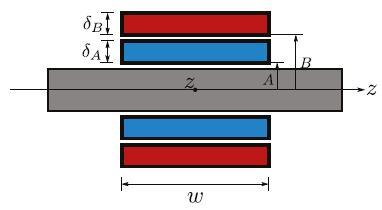
Figure 8 Partial core transformer with two tapes of rectangular cross section placed one over another
Where
Figure 9 shows the behavior of the resistive and inductive parts of the total mutual impedance of a PCT as a function of frequency, ω, obtained with the analytical formula for the parameters shown in Table 1.
Table 1 Parameter Used in FEM and Analytical Model
| Parameter | Value |
|---|---|
| Core | |
| Length | 470 mm |
| Radius | 40 mm |
| Lamination Thickness | 0.23 mm |
| Material | Steel 1010 |
| Inside Winding | |
| Winding Length | 338 mm |
| Wire Thickness | 0.305 mm |
| Current Rating | 100 A |
| Total Turns | 320 |
| Material | Copper |
| Outside Winding | |
| Winding Length | 330 mm |
| Wire Thickness | 0.305 mm |
| Current Rating | 65 A |
| Total Turns | 320 |
| Material | Copper |
The analytical model was compared with the finite element method (FEM) using the ANSYS® Maxwell software, the results of which are shown in Figure 10, where it can be seen that the analytical model adjusts well to the values obtained using the FEM. However, the error obtained between both models is around 7 % for the inductance and 11.4 % for the resistance values, this is because the analytical model does not take into account the non-linear characteristics of the core, it must also be remembered that for the analytical model infinite dimensions were considered in the length and width of the sheets that make up the transformer.
Despite the above, the results obtained show that the analytical model presents a good approximation to the values of resistance and mutual inductance even without considering the non-linear characteristics of the device.
Conclusions
Study of high critical temperature superconductors has allowed the development of a countless number of highly efficient electrical devices with less weight and size. Simpler constructive properties of such devices make them even more beneficent. Partial core high critical temperature superconducting transformers are of that kind. The lack of the external “legs” and the cylindrical geometry of the core make these transformers better candidates for the development of the high efficient power transformers with the size much less than the conventional ones developed up to date. Currently, PTC's are found in resonant transformers or as step-up transformers for capacitive loads (Ming, 2012), but given the characteristics of PTC's, it is possible to manufacture portable step-up/step-down transformers even lighter than those currently on the market. However, research aimed at studying such devices is scarce and only a limited number of models has been developed to study well the achievements of this type of transformers. This paper represented the first analytical approach allowing the determination of the mutual inductance of a laminated partial core transformer, based only on physical and geometrical characteristics of the core and windings. The model properly takes into account the laminated structure of the core. For this purpose, the magnetic permeability and conductivity tensors of the laminated core were obtained as functions of frequency by solving Maxwell's equations within each ferromagnetic sheet. This resulted in additional dependence of the mutual impedance between two windings of frequency. The model was compared with the finite element method using the ANSYS® Maxwell software. This comparison shows that the analytical model obtained is a good approximation for the determination of the mutual impedance of a partial core transformer. However, it is necessary to consider the non-linear characteristic present in this type of devices to have a better fit of the analytical model based on the one obtained through the FEM. Therefore, the subsequent work is to make the model of the non-linear characteristic of the core and add it to the model obtained in this work.











 nueva página del texto (beta)
nueva página del texto (beta)





